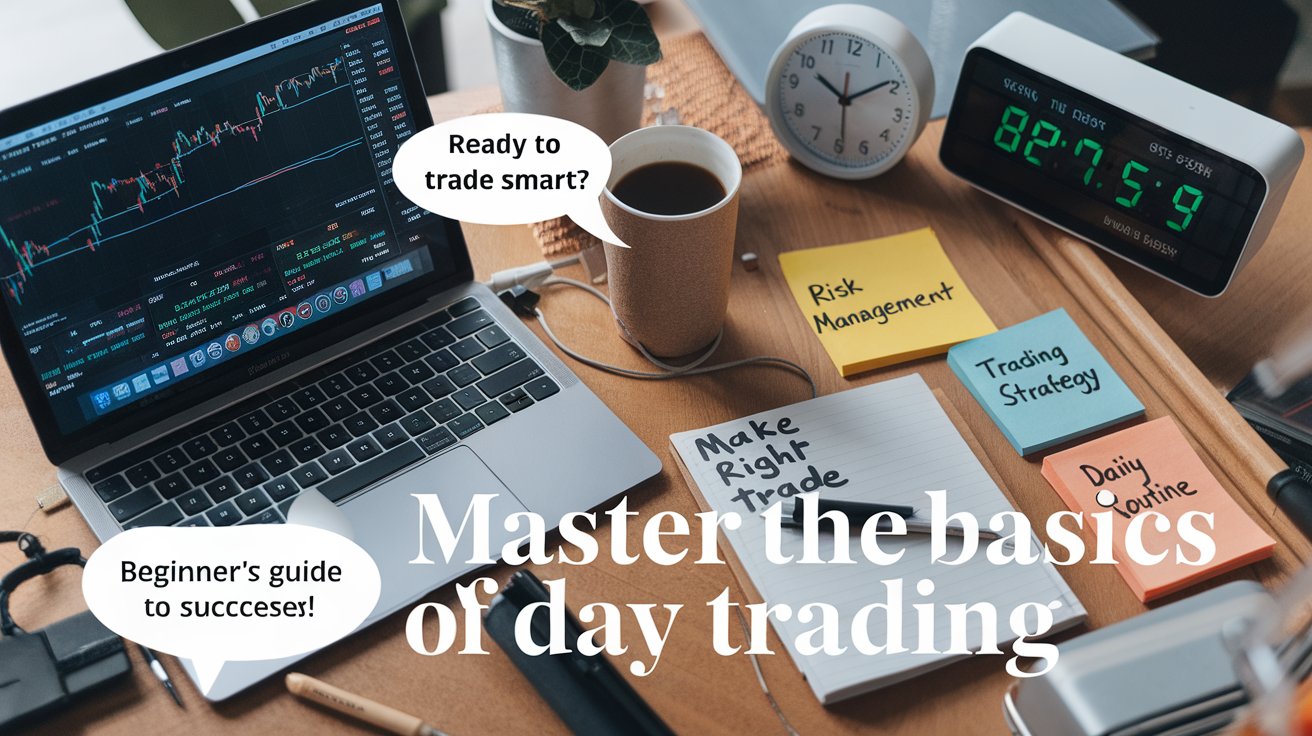Introduction
High-frequency trading (HFT) has transformed financial markets with its rapid trade execution and sophisticated algorithms. However, its profound impact on market stability and systemic risks raises critical questions for traders and investors alike. Events like the flash crash of May 6 demonstrate the vulnerabilities inherent in this trading approach, highlighting the need for robust risk management and regulatory oversight. By understanding how HFT influences bid-ask spreads, liquidity, and market volatility, participants can make informed decisions to protect their investments.
As the financial ecosystem becomes more dependent on technology, traders must adapt to new tools and regulatory changes. Advanced algorithms, real-time monitoring, and collaboration with regulatory bodies such as the SEC are crucial to mitigating the risks of HFT. This article explores key strategies, technologies, and regulations to ensure that high-frequency trading remains a valuable yet secure component of the financial market landscape.
Key Takeaways
- High-frequency trading (HFT) offers speed and efficiency but introduces significant market volatility and systemic risks.
- Robust algorithmic designs with real-time monitoring and risk controls are essential for managing HFT risks.
- Advanced tools like AI, blockchain, and quantum computing are shaping the future of HFT strategies.
- Collaboration with regulatory bodies ensures compliance and mitigates risks such as market manipulation and flash crashes.
- Understanding bid-ask spreads and liquidity dynamics helps traders adapt their strategies effectively.
- Harmonized global regulations are vital to maintaining stability in interconnected financial markets.
Understanding the Impact of HFT on Market Stability
High-frequency trading (HFT) has revolutionized financial markets, but its impact on stability remains a subject of intense debate. The rapid execution of trades, often in fractions of a second, introduces volatility that can disrupt market equilibrium. Events like the flash crash of May 6 highlight how algorithmic trading amplifies systemic risks, causing large-scale price swings in equity markets. By understanding the dynamics of bid-ask spreads, liquidity provision, and price discovery, market participants can better assess how HFT affects financial ecosystems. Traders and investors must also evaluate the role of trading platforms and technologies in maintaining market stability while mitigating adverse effects on pricing and trade execution.
How High-Frequency Trading Affects Market Volatility
High-frequency trading introduces significant volatility into the financial markets. Algorithms that execute thousands of trades in milliseconds can trigger rapid price changes, especially during high-stress market events. This volatility often disrupts the natural process of price discovery, affecting both short-term traders and long-term investors. By analyzing past market anomalies, such as the flash crash, participants can better understand how HFT contributes to instability and prepare mitigation strategies to safeguard market operations.
Bid-Ask Spreads and Liquidity Challenges in HFT
HFT’s impact on bid-ask spreads and liquidity is both a boon and a challenge. While it often narrows spreads and enhances liquidity during normal trading, it can exacerbate liquidity shortages during market disruptions. Traders must evaluate these dynamics to optimize their strategies and manage the risks tied to reduced liquidity in volatile conditions.
Practical Strategies for Addressing HFT Risks
1. Develop Advanced Risk Management Frameworks
Risk management frameworks should include real-time monitoring tools, predictive analytics, and stress testing to mitigate the vulnerabilities of high-frequency trading systems.
2. Prioritize Algorithm Audits
Regular audits of HFT algorithms ensure compliance with regulations and prevent manipulative trading practices, fostering trust among market participants.
3. Leverage AI and Machine Learning
Artificial intelligence and machine learning can enhance predictive capabilities, enabling traders to anticipate market trends and execute informed decisions with precision.
4. Collaborate with Regulatory Authorities
Active dialogue with regulators helps traders stay updated on policies and align strategies with compliance requirements to minimize systemic risks.
5. Embrace Emerging Technologies
Innovations such as blockchain and quantum computing provide opportunities to enhance transparency, reduce settlement risks, and improve trade execution speed.
6. Educate Traders on Market Dynamics
Training and resources focused on understanding market volatility, bid-ask spreads, and liquidity challenges equip traders to navigate the complexities of HFT.
Key Strategies to Manage Systemic Risks in High-Frequency Trading
Mitigating systemic risks in high-frequency trading requires a multi-faceted approach. Traders should focus on robust algorithmic designs that include risk controls and stress-testing mechanisms. Risk management frameworks must incorporate real-time monitoring of trade volumes, market movements, and algorithmic behavior to anticipate potential disruptions. Historical case studies, such as the flash crash, offer valuable lessons on the vulnerabilities of HFT systems. Collaboration with regulatory bodies like the SEC ensures compliance with policies designed to curb market manipulation and promote transparency. A comprehensive strategy integrates risk mitigation with sustainable trading practices to enhance resilience in high-speed financial environments.
Building Resilient Algorithmic Trading Systems
The foundation of risk management in HFT lies in robust algorithmic designs. Incorporating predictive analytics, real-time monitoring, and stress-testing mechanisms can minimize vulnerabilities. These systems also require regular audits to ensure alignment with market conditions and compliance with regulatory frameworks.
Collaborating with Regulatory Bodies for Risk Mitigation
Close collaboration with organizations like the SEC allows HFT firms to stay ahead of compliance requirements. By actively participating in policy discussions and adhering to regulatory changes, traders can mitigate risks associated with market manipulation, flash crashes, and systemic failures.
Case Study: The Flash Crash of May 6, 2010
The Flash Crash of May 6, 2010, serves as a pivotal example of the risks associated with high-frequency trading (HFT). During this event, the Dow Jones Industrial Average plummeted nearly 1,000 points in just minutes before recovering almost as quickly. Investigations revealed that a combination of algorithmic trading and market imbalances played a significant role in amplifying the volatility.
High-frequency traders were found to exacerbate the situation by withdrawing liquidity, leaving the market vulnerable to rapid price swings. The event underscored the importance of implementing safeguards, such as circuit breakers and algorithmic controls, to prevent similar occurrences in the future. Collaboration between regulators like the SEC and market participants led to reforms aimed at enhancing stability, including the introduction of the Limit Up-Limit Down mechanism. This case highlights the critical need for robust risk management and regulatory oversight in the fast-paced world of HFT.
Advanced Tools and Technologies in High-Frequency Trading
The success of high-frequency trading hinges on the use of advanced tools and technologies. From AI-driven algorithms to predictive analytics, these innovations enhance the precision and speed of trade execution. High-performance computing systems allow traders to process vast amounts of market data in milliseconds, identifying lucrative opportunities. Trading platforms optimized for HFT provide robust infrastructure to handle high volumes of orders without compromising stability. As markets evolve, emerging technologies like quantum computing and blockchain may further redefine the HFT landscape. Leveraging these tools effectively requires continuous innovation and adaptation to market dynamics.
The Role of AI and Machine Learning in HFT
Artificial intelligence and machine learning have become essential in optimizing HFT strategies. These technologies enhance the ability to analyze market trends, predict price movements, and execute trades with unparalleled speed and precision. Their adoption ensures traders stay competitive in an ever-evolving financial landscape.
Emerging Technologies Transforming HFT
Emerging innovations, such as blockchain and quantum computing, are set to redefine high-frequency trading. Blockchain enhances transparency and reduces settlement risks, while quantum computing offers unprecedented computational power for processing complex trading algorithms. Embracing these technologies could shape the future of trading systems.
“High-frequency trading offers remarkable efficiency, but it demands a balance of innovation and regulation to ensure market stability.” – Mary Schapiro, Former Chair of the U.S. Securities and Exchange Commission.
The Role of Regulation in Mitigating Risks Associated with HFT
Regulatory frameworks play a pivotal role in addressing the risks of high-frequency trading. Entities such as the Securities and Exchange Commission (SEC) and Commodity Futures Trading Commission (CFTC) implement policies to prevent market manipulation and ensure fair trading practices. Regulations targeting issues like excessive order cancellations and flash crashes aim to protect investors and maintain market integrity. By mandating transparency in algorithmic trading and enforcing risk control measures, regulators help stabilize financial markets. However, ongoing collaboration between industry stakeholders and regulatory bodies is essential to adapt these frameworks to the complexities of modern HFT environments.
Transparency and Accountability in Algorithmic Trading
Regulatory efforts focusing on transparency ensure that algorithmic trading systems are auditable and free from manipulative practices. Mandates like reporting large-scale order cancellations and providing algorithmic audit trails help build investor trust and market integrity.
Addressing the Challenges of Global HFT Regulation
Given the interconnected nature of global financial markets, harmonizing regulations across jurisdictions remains critical. Cross-border collaboration ensures that loopholes exploited in one market do not destabilize others, creating a more stable international trading ecosystem.
Conclusion
High-frequency trading (HFT) is a double-edged sword in modern financial markets. While it offers speed, efficiency, and enhanced liquidity under normal conditions, it also poses significant risks, including volatility and systemic disruptions during market stress. By understanding these dynamics, traders can better prepare for challenges and leverage HFT’s advantages responsibly. Lessons from past market events, such as the flash crash of May 6, underscore the importance of risk controls and adaptive strategies.
To navigate this fast-paced trading environment, it’s essential to adopt advanced tools, ensure compliance with regulatory frameworks, and prioritize risk management. Collaborative efforts between traders, financial firms, and regulatory bodies are key to maintaining market stability. By balancing innovation with caution, HFT can continue to drive progress in the financial markets without compromising their integrity.















